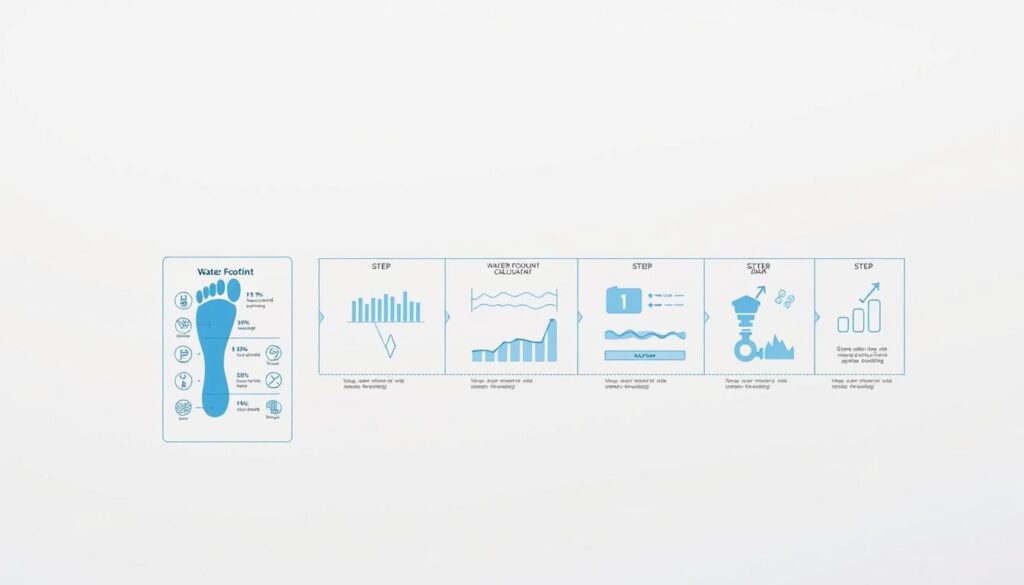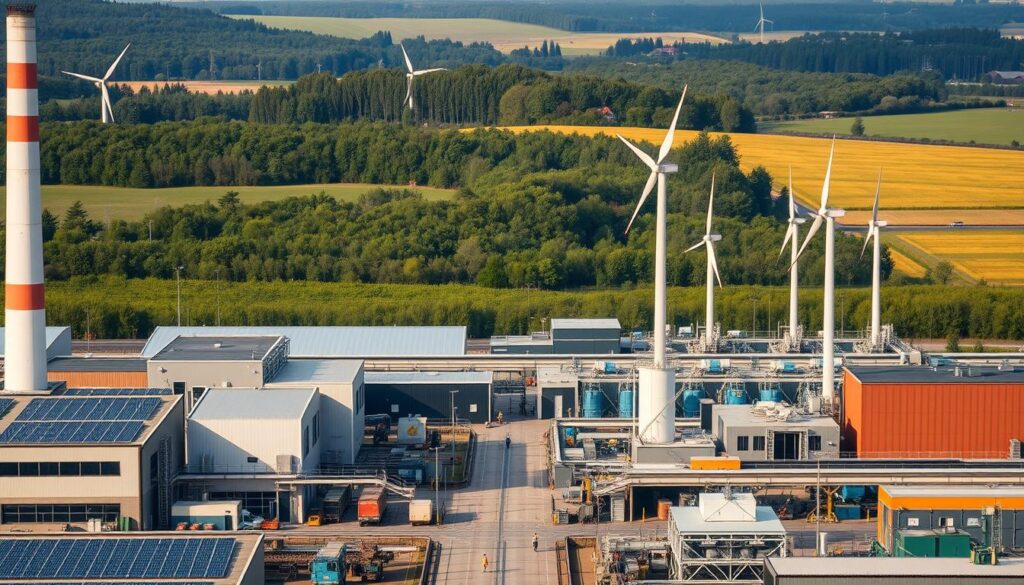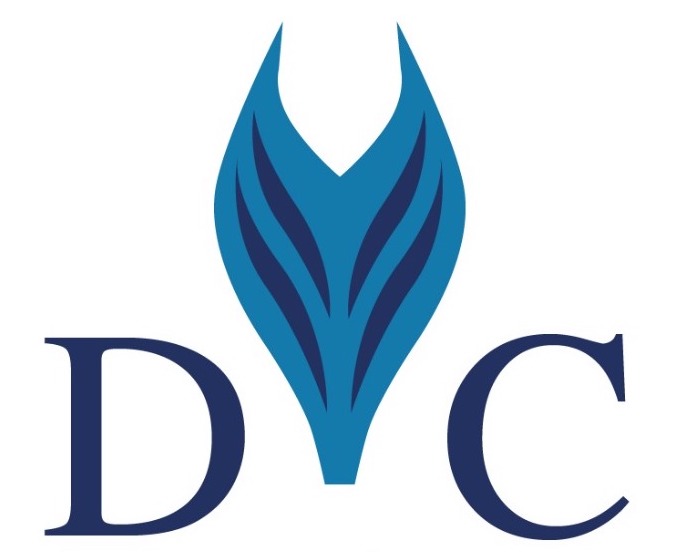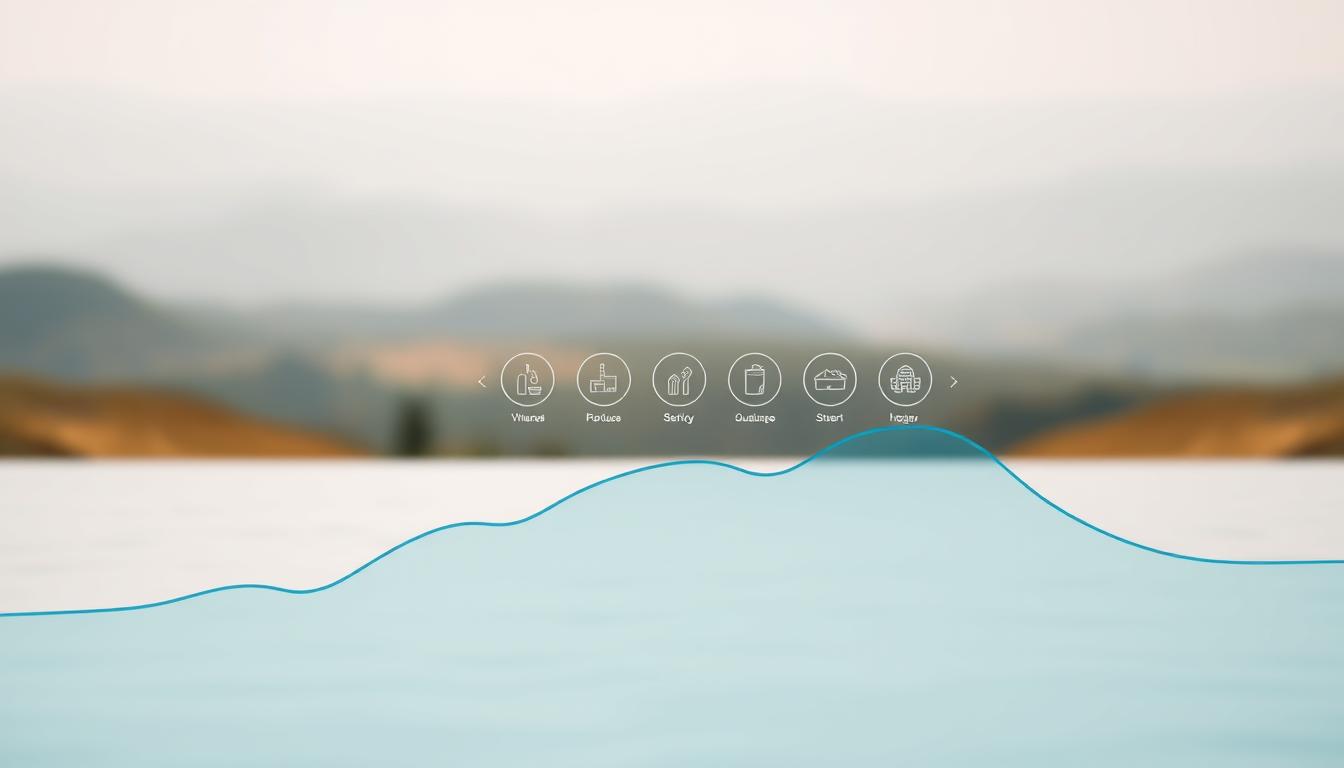In a world where water scarcity is becoming a pressing issue, understanding and calculating the water footprint has become crucial for businesses and individuals alike.
For Industrial Sustainability Companies in Germany, assessing their water footprint is not just a matter of environmental stewardship but also a strategic business decision. It helps in identifying areas of inefficiency and opportunities for cost savings.
By calculating their water footprint, companies can better navigate the challenges of sustainable practices and contribute to a more water-secure future.
Key Takeaways
- Understanding water footprint is crucial for businesses.
- Calculating water footprint helps in identifying inefficiencies.
- It is a strategic decision for Industrial Sustainability Companies.
- Water footprint calculation contributes to sustainable practices.
- It aids in cost savings and environmental stewardship.
Understanding Water Footprint and Its Importance
Water footprint assessment is a vital tool for industries aiming to reduce their environmental impact. It provides a comprehensive measure of the total volume of water used directly or indirectly to produce goods and services.
Definition of Water Footprint
The water footprint is defined as the total volume of water used throughout the supply chain of a product or service. This includes water consumed during production, processing, and distribution. Sustainable Water Management practices are essential for reducing the water footprint of industries.
Types of Water Footprints
There are three main categories of water footprints: Blue, Green, and Gray.
- Blue Water Footprint: Refers to the volume of freshwater consumed from rivers, lakes, and aquifers.
- Green Water Footprint: Represents the amount of rainwater used during the production process.
- Gray Water Footprint: Indicates the amount of freshwater required to dilute pollutants and maintain water quality standards.
| Type of Water Footprint | Description |
|---|---|
| Blue | Freshwater consumed from rivers, lakes, and aquifers |
| Green | Rainwater used during production |
| Gray | Freshwater required to dilute pollutants |
Significance for Industries
Understanding and managing water footprint is crucial for industries as it helps identify areas for improvement in production processes, leading to more efficient water use and reduced environmental impact. Environmental Impact Assessment is a critical step in this process, enabling industries to evaluate their water usage and implement sustainable practices.
By adopting Sustainable Water Management practices, industries can not only reduce their water footprint but also contribute to the overall goal of environmental sustainability.
The Water Crisis in Germany: An Overview
As climate change intensifies, Germany’s water supply is under increasing strain, affecting both the environment and industries. Understanding the nuances of this crisis is crucial for developing effective sustainable water management practices.
Current Water Supply Scenario
Germany’s water supply is sourced from various natural resources, including rivers, lakes, and groundwater. However, the availability of these resources is not limitless, and the country faces challenges in maintaining a balance between supply and demand.
Water Resources in Germany:
| Source | Percentage of Total Supply |
|---|---|
| Groundwater | 70% |
| Rivers and Lakes | 30% |
Impact of Climate Change
Climate change is altering precipitation patterns and increasing temperatures, leading to more frequent and severe droughts and floods. This variability directly impacts Germany’s water resources, making it challenging to maintain a stable supply.
The effects of climate change on water resources are multifaceted, necessitating adaptive management strategies to mitigate these impacts.
Water Scarcity and Industrial Impact
Water scarcity can have significant implications for industries that rely heavily on water, such as agriculture, manufacturing, and energy production. In Germany, these sectors are critical to the economy, and water scarcity can lead to operational challenges and economic losses.
Industries are adopting various strategies to reduce their water footprint, including water recycling and efficient use practices. Implementing these strategies not only helps in conserving water but also contributes to sustainable development initiatives in Germany.
Key Strategies for Industries:
- Implementing water-saving technologies
- Adopting water recycling practices
- Enhancing operational efficiency
How to Calculate Your Water Footprint
Water footprint calculation is an essential practice for industries aiming to reduce their environmental impact. It involves assessing both direct and indirect water usage.
Key Indicators for Calculation
The key indicators for water footprint calculation include water consumption, water pollution, and the impact of water usage on the environment. Accurate data collection on these indicators is crucial for a reliable calculation.
Tools and Resources
Several tools and resources are available to aid in water footprint calculation. The Water Footprint Assessment Tool and the Extended Water Footprint Calculator are notable examples. These tools simplify the process by providing structured methodologies and data requirements.
Step-by-Step Calculation Guide
To calculate your water footprint, follow these steps:
- Gather data on your water consumption and pollution.
- Use a water footprint tool to assess your data.
- Analyze the results to identify areas for improvement.
Here’s an example table illustrating a simplified water footprint calculation:
| Water Usage Category | Volume (m³) | Impact Assessment |
|---|---|---|
| Direct Water Consumption | 1000 | High |
| Indirect Water Consumption | 500 | Moderate |

Industrial Sectors with High Water Footprints
The water footprint of various industrial sectors in Germany, including agriculture, textiles, and energy, is substantial and warrants closer examination. Understanding the water usage patterns in these sectors is crucial for developing effective strategies to reduce their water footprint.
Agriculture and Food Production
Agriculture is one of the largest consumers of water in Germany, with significant water usage in crop production and livestock farming. The water footprint of agricultural products varies widely depending on factors such as crop type, farming practices, and regional water availability.
Key water usage areas in agriculture include:
- Irrigation for crops
- Water for livestock
- Processing and cleaning of agricultural products
Textile and Fashion Industry
The textile and fashion industry is another significant user of water, primarily in the production of raw materials, dyeing, and finishing processes. The water footprint of textiles is substantial, and companies in this sector are under increasing pressure to adopt more sustainable water management practices.
Strategies for reducing water footprint in the textile industry include:
- Adopting water-saving technologies in manufacturing processes
- Using sustainable materials with lower water footprints
- Implementing recycling and reuse of water in production
Energy Production
Energy production, particularly thermal power plants, requires significant amounts of water for cooling systems. The water footprint of energy production is an important consideration, especially as Germany transitions towards more renewable energy sources.
Water-saving measures in energy production include:
- Implementing dry cooling systems
- Using recycled water for cooling
- Improving the efficiency of water use in power generation
Industrial sustainability companies play a crucial role in promoting corporate social responsibility by helping these sectors reduce their water footprint. Through innovative technologies and sustainable practices, these companies contribute to a more water-efficient industrial landscape in Germany.
Best Practices for Reducing Water Footprint
Reducing water footprint is a pressing concern for German industries, necessitating the adoption of innovative water management techniques. As the industrial sector continues to grow, the need for sustainable water management practices becomes increasingly important.
Industries can adopt several best practices to minimize their water footprint. One effective approach is through water recycling techniques. By reusing water, industries can significantly reduce their water consumption and dependency on freshwater sources.
Water Recycling Techniques
Water recycling involves treating wastewater to make it suitable for reuse in various industrial processes. This not only conserves water but also reduces the environmental impact of discharging untreated wastewater. Green technology providers offer advanced solutions for water recycling, including membrane bioreactors and advanced oxidation processes.
- Implementing water recycling systems can help reduce water costs.
- Water recycling contributes to a more sustainable industrial operation.
- Advanced technologies improve the efficiency of water recycling processes.
Efficient Water Use Strategies
Adopting efficient water use strategies is another critical approach. This includes optimizing industrial processes to minimize water consumption and implementing water-saving technologies. For instance, using water-efficient cooling systems and optimizing production processes can significantly reduce water usage.
| Strategy | Description | Benefits |
|---|---|---|
| Water-Efficient Cooling Systems | Using advanced cooling systems that consume less water. | Reduces water consumption, lowers operational costs. |
| Process Optimization | Optimizing production processes to minimize water usage. | Enhances operational efficiency, reduces water footprint. |
Innovations in Water Management
Innovations in water management are crucial for reducing water footprints. Technologies such as IoT sensors and smart water management systems enable real-time monitoring and management of water resources. For more insights on the water technology industry in Germany, visit this guide.
By embracing these best practices, German industries can significantly reduce their water footprint, contributing to a more sustainable future. The role of green technology providers is pivotal in this transition, offering cutting-edge solutions for water management and recycling.
Role of Industrial Sustainability Companies in Germany
The role of industrial sustainability companies in Germany cannot be overstated, as they lead the way in promoting water sustainability. These companies are crucial in helping industries reduce their water footprint through innovative solutions and best practices.
Leading Companies in Water Sustainability
Several industrial sustainability companies in Germany are making significant contributions to water conservation. Companies like Siemens and ThyssenKrupp are leveraging their expertise to develop sustainable water management systems. These companies are not only providing cutting-edge technology but also consulting services to help industries assess and improve their water usage.

Services Offered by These Companies
The services offered by these industrial sustainability companies are diverse and tailored to meet the specific needs of different industries. Some of the key services include:
- Water footprint assessment and analysis
- Development of water-saving technologies
- Consulting on water recycling and reuse
- Implementation of efficient water management systems
These services enable industries to not only reduce their water consumption but also to comply with regulatory requirements and improve their overall sustainability.
Case Studies of Success
Several case studies highlight the success of industrial sustainability companies in Germany. For instance, a leading textile manufacturer was able to reduce its water consumption by 30% through the implementation of a water recycling system designed by one of these companies. Another example is an energy production company that achieved significant water savings by adopting advanced water management technologies.
These case studies demonstrate the tangible impact that industrial sustainability companies can have on water conservation efforts in Germany.
Regulatory Framework for Water Use in Germany
The regulatory environment for water management in Germany is shaped by both national laws and EU directives. This complex framework is designed to ensure the sustainable use of water resources, a critical component of environmental impact assessment and sustainable development initiatives.
Overview of German Water Law
German water law is primarily governed by the Federal Water Act (Wasserhaushaltsgesetz), which regulates the use of water resources. The law emphasizes the protection of water bodies and promotes sustainable water management practices. Industries are required to adhere to strict guidelines to minimize their water footprint.
The law also mandates the implementation of measures to prevent water pollution and to restore water bodies. This includes the use of best available techniques and the adoption of environmentally friendly practices.
EU Regulations Affecting Water Management
As a member of the European Union, Germany is also subject to EU water regulations. The EU’s Water Framework Directive (WFD) is a key piece of legislation that aims to achieve good qualitative and quantitative status of all water bodies. The directive requires member states to develop river basin management plans and to implement measures to achieve good water status.
Additionally, the EU’s Urban Waste Water Treatment Directive and the Drinking Water Directive set standards for waste water treatment and drinking water quality, respectively. These directives have a significant impact on Germany’s water management practices, particularly in terms of infrastructure development and water treatment technologies.
Compliance and Reporting Requirements
Industries operating in Germany are required to comply with the regulatory framework governing water use. This includes obtaining permits for water withdrawals and discharges, implementing water-saving measures, and reporting on their water usage.
The reporting requirements typically involve submitting regular reports on water consumption, waste water generation, and measures taken to reduce water usage. Compliance with these requirements is crucial for avoiding penalties and ensuring sustainable operations.
By understanding and adhering to the regulatory framework, industries can contribute to Germany’s efforts to protect its water resources and promote sustainable development.
Water Footprint Management Strategies for Industries
As water scarcity becomes a pressing issue, German industries are adopting robust water footprint management strategies. Effective water footprint management involves a multi-faceted approach that includes setting clear targets, monitoring and reporting water use, and engaging employees in conservation efforts.
Setting Water Usage Targets
Setting water usage targets is a critical step in water footprint management. Industries must establish clear, measurable goals for reducing their water consumption. According to industry experts, “Setting specific targets helps in driving water efficiency initiatives and measuring progress over time.” Understanding the water technology market in can provide valuable insights into setting these targets.
Industries can use various metrics to set their targets, such as water consumption per unit of production or total water withdrawal. By having specific targets, companies can better focus their efforts on achieving Water Efficiency Solutions.
Monitoring and Reporting Systems
Implementing robust monitoring and reporting systems is essential for tracking water usage and identifying areas for improvement. Advanced technologies, including IoT sensors and data analytics, play a crucial role in this process.
Regular monitoring allows industries to detect leaks, optimize water distribution, and ensure compliance with regulatory requirements. As noted by a leading sustainability expert, “Accurate monitoring and reporting are key to demonstrating Corporate Social Responsibility and building trust with stakeholders.”
- Real-time water usage tracking
- Automated reporting systems
- Data analysis for optimization
Employee Engagement and Training
Employee engagement is vital for the success of water footprint management strategies. Educating employees on the importance of water conservation and involving them in the process can lead to significant improvements.
Training programs can include workshops on water-saving techniques, awareness campaigns, and incentive programs for employees who contribute to water conservation efforts. By fostering a culture of water efficiency, industries can achieve their sustainability goals more effectively.
“Employee engagement is not just about reducing water consumption; it’s about creating a culture that values sustainability.” – Sustainability Expert
By implementing these strategies, industries in Germany can significantly reduce their water footprint, enhance their Corporate Social Responsibility, and contribute to a more sustainable future.
Tools and Technologies for Water Footprint Tracking
As industries in Germany strive to reduce their environmental impact, leveraging the right tools and technologies for water footprint tracking becomes crucial. The availability of various software solutions, IoT devices, and data analysis techniques has made it easier for companies to monitor and manage their water usage effectively.
Software Solutions Available
Several software solutions are now available that cater to the needs of industries looking to track their water footprint. These include:
- Water management software that helps in monitoring water usage and detecting leaks or inefficiencies.
- Data analytics platforms that provide insights into water consumption patterns, enabling industries to make informed decisions.
Companies like SAP and Oracle offer comprehensive solutions that integrate water management into their broader environmental sustainability frameworks.
IoT and Smart Water Management Technologies
The Internet of Things (IoT) has revolutionized water management by introducing smart technologies that enable real-time monitoring and control. IoT devices can be used to:
- Track water flow and quality.
- Detect anomalies and predict potential issues.
- Automate water distribution and management processes.
These technologies not only enhance efficiency but also contribute to significant cost savings.
Data Analysis for Optimization
Effective data analysis is key to optimizing water footprint. By leveraging data analytics, industries can:
- Identify areas of inefficiency.
- Predict future water demands.
- Develop targeted strategies for reduction.
Green Technology Providers are playing a pivotal role in this area by offering advanced data analytics services tailored to water footprint calculation and management.
By embracing these tools and technologies, industries in Germany can significantly reduce their water footprint, contributing to a more sustainable future.
Future Trends in Water Sustainability for Industries
The future of water sustainability in German industries is poised to be influenced by emerging technologies, the adoption of circular economy principles, and a transition towards renewable water sources. As the industrial sector continues to grow, the need for Sustainable Development Initiatives and effective Sustainable Water Management practices will become increasingly important.
Innovative Technologies
New technologies are being developed to improve water efficiency and reduce waste. These innovations will play a crucial role in helping industries achieve their sustainability goals.
Circular Economy Principles
The application of circular economy principles to water management involves designing systems that are restorative and regenerative by design. This approach can significantly reduce the water footprint of industries.
Renewable Water Sources
The shift towards renewable water sources, such as rainwater harvesting and water recycling, will become more prevalent. This transition will help reduce dependence on traditional water sources and enhance water security for industries.
FAQ
What is a water footprint, and why is it important for industrial sustainability in Germany?
A water footprint refers to the amount of water used to produce, process, and consume a product or service. Understanding and managing water footprint is crucial for industrial sustainability in Germany as it helps industries identify areas for improvement in their production processes, reduce water waste, and promote sustainable water management.
How can industries in Germany calculate their water footprint?
Industries in Germany can calculate their water footprint by using key indicators such as water consumption, water pollution, and water usage patterns. They can utilize available tools and resources, including software solutions and IoT technologies, to perform a step-by-step calculation.
Which industrial sectors have high water footprints in Germany?
Industrial sectors with high water footprints in Germany include agriculture and food production, textile and fashion industry, and energy production. These sectors require significant amounts of water for their operations, and understanding their water usage patterns is essential for promoting sustainable water management.
What are some best practices for reducing water footprint in industries?
Best practices for reducing water footprint include implementing water recycling techniques, adopting efficient water use strategies, and leveraging innovations in water management provided by green technology providers. Industrial sustainability companies in Germany can also offer guidance and support in reducing water footprint.
What is the regulatory framework for water use in Germany?
The regulatory framework for water use in Germany includes German water law, EU regulations affecting water management, and compliance and reporting requirements for industries. Industries must comply with these regulations to ensure sustainable water management and avoid penalties.
How can industries implement effective water footprint management strategies?
Industries can implement effective water footprint management strategies by setting water usage targets, establishing monitoring and reporting systems, and promoting employee engagement and training. This helps to identify areas for improvement and optimize water usage.
What tools and technologies are available for water footprint tracking?
Tools and technologies available for water footprint tracking include software solutions, IoT and smart water management technologies, and data analysis for optimization. These tools enable industries to monitor and manage their water usage in real-time, identify areas for improvement, and optimize their water footprint.
What are the future trends in water sustainability for industries in Germany?
Future trends in water sustainability for industries in Germany include the adoption of emerging technologies and innovations, the application of circular economy principles to water management, and the transition to renewable water sources. These trends will shape the future of water sustainability in Germany and promote sustainable development initiatives.
How can industrial sustainability companies in Germany support water sustainability initiatives?
Industrial sustainability companies in Germany can support water sustainability initiatives by offering services such as water footprint assessment, water management consulting, and sustainable water solutions. They can also provide case studies and best practices to help industries improve their water sustainability performance.
What is the role of corporate social responsibility in promoting water sustainability?
Corporate social responsibility plays a crucial role in promoting water sustainability by encouraging industries to adopt sustainable water management practices, reduce their water footprint, and promote water conservation. This contributes to a more sustainable and environmentally conscious business culture in Germany.




